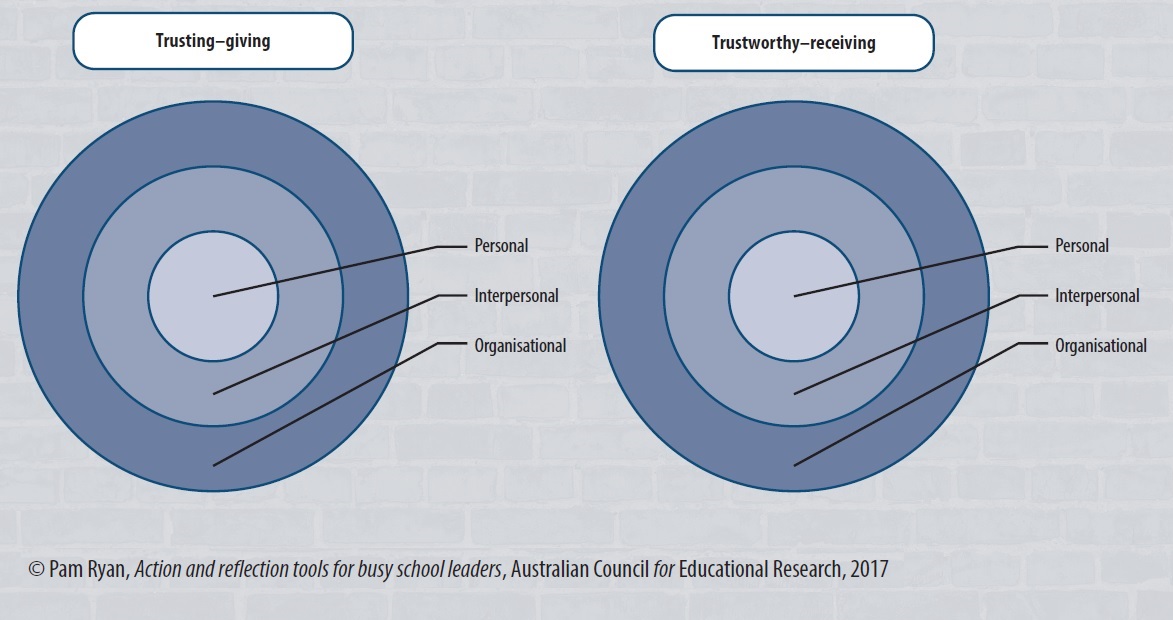In her new book Action and Reflection Tools for Busy School Leaders, Pam Ryan provides a suite of practical action and reflection tools (ART) intended to support professional development and school development. In this extract for Teacher readers, Ryan explores the importance of communication and trust.
Overarching principle: It's all about communication
Leadership is about influence and how people may come to share purpose, aspirations and language. Leaders exercise their craft in different ways and through various approaches but will essentially be influential in the dual realms of people and ideas. That influence doesn't mean all the ideas and the authority are theirs – rather that they have the capability and the means by which to harness talents, elicit fresh thinking, build trust, clarify ideas, build commitment and make decisions.
At the heart of these endeavours is communication. Whether it is leading teams, running meetings or building community confidence, all of these have in common the need for effective communication. Although seemingly obvious, many an evaluation or review will reveal levels of miscommunication and the resulting confusion and frustration. It's all about communication.
In essence, communication is a social and reciprocal interaction between people. It is, in a very real sense, a meeting of minds where individuals are able to exchange thinking. More than mere activity, communication implies recognition, understanding and the possibility of acceptance of each other's ideas. The tools in this collection are all about communication.
The importance of trust
What is it?
Of all the ‘virtues' leaders need to demonstrate and to engender, trust is crucial. Trust serves both an organisational and personal purpose. Organisationally it underlies the norms which develop, enabling all to get on with the task at hand.
At the individual level it is the basis of all relationships. ART 3 [resource below] is designed to explore two dimensions of trust, the giving (trusting) and the receiving (trustworthiness).
How does it work?
Step 1. Explain to participants that they are going to spend time thinking about their own practice. Explain that trust is fundamental to sound leadership, distinguishing the two dimensions of giving and receiving.
Step 2. Using ART 3, ask participants to note ways in which they are trusting – that is, giving trust.
Step 3. Using ART 3, ask participants to note ways in which they are trustworthy –that is, receiving trust.
Step 4. Facilitate a discussion of the factors that affect trust (trusting and trustworthiness).
Step 5. Invite participants to share specific examples of the building and breakdown of trust.
When or how might it be used?
Examples include: to focus a team when establishing its behavioural norms; in circumstances where trust has been eroded; when wanting all parties to understand the reciprocal nature of trust; to focus on a single fundamental principle for school or team effectiveness; to gain or give feedback; as the basis on which an intervention might be planned.
Materials/resources required
Individual copies of ART 3; chart paper or a means of electronic recording.
Suggested reading
Ryan, P. (2016) Wise heads, wise hearts: Conversations with Asian-Pacific school leaders. Melbourne: ACER.
Schumaker, D., & Sommers, W. (2001). Being a successful principal. Thousand Oaks, CA: Corwin Press.
ART 3: The importance of trust tool
Trust is fundamental to managing the complexity of the modern world, enabling us to maintain certain expectations of ourselves, of others or of systems. We base our decisions on those expectations. Trust is about being both trusting (giving) and trustworthy (receiving).
Task:
1. Reflecting on your own leadership. By what means do you give and receive trust ––– personally, interpersonally and organisationally?
2. What specific examples might you provide of the building and breakdown of trust?
3. By what means do you gauge levels of trust in your school or situation?

Action and Reflection Tools for Busy School Leaders, by Pam Ryan, is published by ACER Press and available to purchase via this link.



